Resident Crews of the International Space Station (ISS)
![]()
ISS: Expedition 45 |
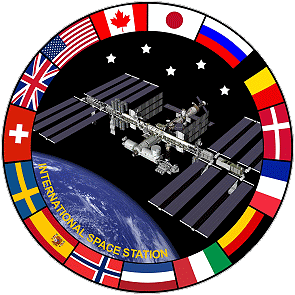 |
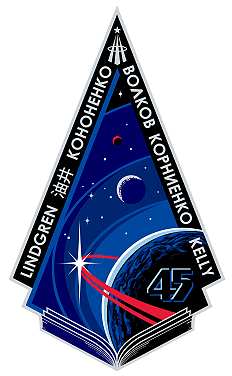 |
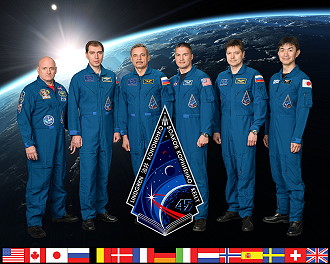 |
alternative crew photo |
|
alternative crew photo |
|
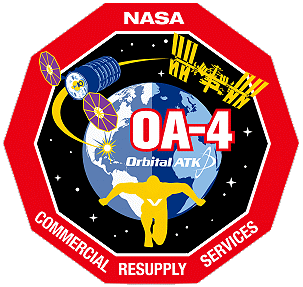 |
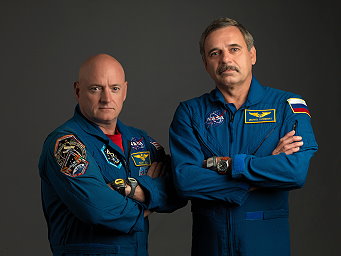 |
alternative crew photo |
![]()
Crew, launch- and landing data
| No. | Nation | Surname | Given names | Position | Spacecraft (launch) |
Launch date |
Launch time |
Spacecraft (landing) |
Landing date |
Landing time |
Mission duration |
Orbits |
| 1 | Kelly | Scott Joseph | ISS-CDR | Soyuz TMA-16M | 27.03.2015 | 19:42:57.549 UTC | Soyuz TMA-18M | 02.03.2016 | 04:25:50.5 UTC | 340d 08h 42m 54s | 5356 | |
| 2 | Volkov | Sergei Aleksandrovich | Flight Engineer-1 | Soyuz TMA-18M | 02.09.2015 | 04:37:43.233 UTC | Soyuz TMA-18M | 02.03.2016 | 04:25:50.5 UTC | 181d 23h 48m 07s | 2833 | |
| 3 | Korniyenko | Mikhail Borisovich | Flight Engineer-2 | Soyuz TMA-16M | 27.03.2015 | 19:42:57.549 UTC | Soyuz TMA-18M | 02.03.2016 | 04:25:50.5 UTC | 340d 08h 42m 54s | 5356 | |
| 4 | Kononenko | Oleg Dmitriyevich | Flight Engineer-4 | Soyuz TMA-17M | 22.07.2015 | 21:02:44.618 UTC | Soyuz TMA-17M | 11.12.2015 | 13:12:30.4 UTC | 141d 16h 09m 46s | 2207 | |
| 5 | Yui | Kimiya | Flight Engineer-5 | Soyuz TMA-17M | 22.07.2015 | 21:02:44.618 UTC | Soyuz TMA-17M | 11.12.2015 | 13:12:30.4 UTC | 141d 16h 09m 46s | 2207 | |
| 6 | Lindgren | Kjell Norwood | Flight Engineer-6 | Soyuz TMA-17M | 22.07.2015 | 21:02:44.618 UTC | Soyuz TMA-17M | 11.12.2015 | 13:12:30.4 UTC | 141d 16h 09m 46s | 2207 |
unofficial Backup Crew
| No. | Nation | Surname | Given names | Position |
| 1 | Williams | Jeffrey Nels | ISS-CDR | |
| 2 | Skripochka | Oleg Ivanovich | Flight Engineer | |
| 3 | Volkov | Sergei Aleksandrovich | Flight Engineer | |
| 4 | Malenchenko | Yuri Ivanovich | Flight Engineer | |
| 5 | Peake | Timothy Nagel | Flight Engineer | |
| 6 | Kopra | Timothy Lennart | Flight Engineer |
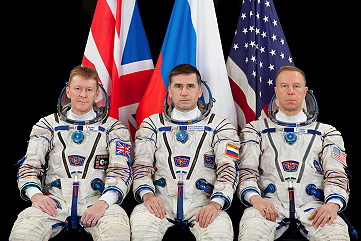 |
|
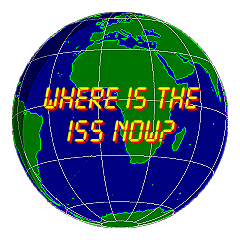 |
Expedition Report
|
ISS Expedition 45 began with the undocking of
spacecraft Soyuz TMA-16M on September 11, 2015 at 21:29:10
UTC. The commander of the former
Expedition 44 (Gennadi
Padalka) returned safely to Earth (together with Andreas
Mogensen and Aydyn
Aimbetov). Following a one-orbit delay to clear an error message from the space station's robotic arm, Kimiya Yui, backed up by Kjell Lindgren, commanded the release of Japan's H-II Transfer Vehicle (HTV)-5 from the International Space Station on September 28, 2015 at 16:53 UTC. The transport ship was filled with trash. On the following day flight controllers in Japan deorbited the cargo freighter. The unmanned Russian freighter, Progress M-29M, was launched on October 01, 2015 at 16:49:40:648 UTC from the Baikonur Cosmodrome and reached the planned orbit without any problems. Progress M-29M is delivering more than 3 tons of food, fuel and supplies to the crew and docked to the Zvezda docking compartment. Following a six-hour-flight Progress M-29M docked with the International Space Station on October 01, 2015 at 22:52:19 UTC. The first spacewalk was performed by Scott Kelly and Kjell Lindgren on October 28, 2015 (7h 16m). The EVA focused on station upgrades and maintenance tasks, including installing a thermal cover on the Alpha Magnetic Spectrometer, which is a state-of-the-art particle physics detector that has been attached to the station since 2011. Scott Kelly and Kjell Lindgren ventured out of the Quest airlock on November 06, 2015 (7h 48m) for a second EVA. The astronauts attempted to restore the port truss ammonia cooling system to its original configuration. A spacewalk conducted in November 2012 tried to isolate a leak in the truss' cooling supply, but the leak was subsequently traced to a different component. On December 06, 2015 at 21:44:57 UTC NASA commercial partner Orbital ATK launched a Cygnus spacecraft “S.S. Deke Slayton II” on a United Launch Alliance Atlas V rocket from Space Launch Complex 41 on Cape Canaveral Air Force Station in Florida. Cygnus carried more than 7,000 pounds (3,175 kg) of science and research, crew supplies and vehicle hardware to the orbital laboratory to support dozens of approximately 250 science and research investigations that will occur during Expeditions 45 and 46. This first Cygnus mission using the Atlas V launch system provides increased performance and flexibility to the Orbital ATK cargo delivery service. It was the fourth contracted mission of Orbital ATK to the International Space Station under the agency's Commercial Resupply Services contract. Cygnus arrived at the space station on December 09, 2015. Kjell Lindgren and Scott Kelly used the station's Canadarm2 robotic arm to reach out and capture Cygnus at 11:19 UTC. Cygnus was the first cargo ship to be berthed to the Earth-facing port on the Unity module (14:26 UTC). The spacecraft spent February 19, 2016 attached to the space station before its destructive re-entry into Earth's atmosphere, disposing of about 3,000 pounds (1,360 kg) of trash. Among the most important experiments are: CALorimetric Electron Telescope (CALET): This astrophysics mission uses specialized equipment to search for dark matter and measure cosmic rays to observe sources of high energy phenomena in the galaxy. CALET seeks to discover the answers to many high-energy astrophysics questions including the origin of cosmic rays, how cosmic rays accelerate and move across the galaxy, and the existence of dark matter and its relation to nearby cosmic ray sources. Once scientists take an inventory of the highest-energy radiation in space, they may be able to characterize the radiation environment experienced by humans and encountered by space electronics. This may help determine risk of exposure to this type of radiation. Flame Extinguishment Experiment-2 JAXA (FLEX-2J): Fires burn differently in space, where fuels form spherical droplets and flames burn in a rounded form, rather than straight up. The Flame Extinguishment Experiment-2 JAXA (FLEX-2J) studies the interactions of flames on the motion and ignition (or non-ignition) of millimeter-sized droplets. Results can provide fundamental insight into the physics of fuel burning, which improves computer models designed to reduce emissions and improve fuel consumption efficiency in space and on Earth. Assessing Telomere Lengths and Telomerase Activity in Astronauts (Telomeres): Telomeres are "caps" on the ends of chromosomes that protect them from fraying, much like the end of a shoelace, and an enzyme, called telomerase, maintains their length. Telomeres shorten over time, and the rate at which this occurs can be increased by stress, leading to accelerated aging, cardiovascular disease, cancer, and an impaired immune system. The Telomeres investigation collects crew member blood samples to determine how telomeres and telomerase are affected by space travel. This research will help investigators better evaluate the impact of future space flight, specifically related to changes in telomere length and telomerase activity, and potential related health effects. With undocking of Soyuz TMA-17M, carrying Oleg Kononenko, Kimiya Yui and Kjell Lindgren, on December 11, 2015 at 09:49:35 UTC the Expedition 45 concluded and the new ISS Expedition 46 began. US astronaut Scott Kelly remained station commander. During the stay on board of the ISS the crews of Expeditions 45 / 46 carried out the following scientific experiments: 3D Printing In Zero-G (3D Printing In Zero-G Technology Demonstration) 3DA1 Camcorder (Panasonic 3D Camera) ACE-H-2 (Advanced Colloids Experiment-Heated-2) ACE-T-1 (Advanced Colloids Experiment-Temperature control-1) AIRWAY MONITORING (AIRWAY MONITORING) AMS-02 (Alpha Magnetic Spectrometer - 02) APEX-04 (Epigenetic change in Arabidopsis thaliana in response to spaceflight - differential cytosine DNA methylation of plants on the ISS) AQH Microscope Checkout (AQH Microscope Checkout) ATOMIZATION (Detailed validation of the new atomization concept derived from drop tower experiments--Aimed at developing a turbulent atomization simulator) Aniso Tubule (Roles of cortical microtubules and microtubule-associated proteins in gravity-induced growth modification of plant stems) Area PADLES (Area Passive Dosimeter for Life-Science Experiments in Space) BEAM (Bigelow Expandable Activity Module) BP Reg (A Simple In-flight Method to Test the Risk of Fainting on Return to Earth After Long-Duration Space Flights) Biochem Profile (Biochemical Profile) Biological Rhythms 48hrs (The effect of long-term microgravity exposure on cardiac autonomic function by analyzing 48-hours electrocardiogram) Bisphosphonates (Bisphosphonates as a Countermeasure to Space Flight Induced Bone Loss) Body Measures (Quantification of In-Flight Physical Changes - Anthropometry and Neutral Body Posture) CALET (CALorimetric Electron Telescope) CARTILAGE (CARTILAGE) CATS (Cloud-Aerosol Transport System) Cardio Ox (Defining the Relation Between Biomarkers of Oxidative and Inflammatory Stress and Atherosclerosis Risk in Astronauts During and After Long-duration Spaceflight) Circadian Rhythms (Circadian Rhythms) Cognition (Individualized Real-Time Neurocognitive Assessment Toolkit for Space Flight Fatigue) DOSIS-3D (Dose Distribution Inside the International Space Station - 3D) Dose Tracker (Dose Tracker Application for Monitoring Medication Usage, Symptoms, and Adverse Effects During Missions) Dynamic Surf (Experimental Assessment of Dynamic Surface Deformation Effects in Transition to Oscillatory Thermo capillary Flow in Liquid Bridge of High Prandtl Number Fluid) ESA-Haptics-1 (ESA-Haptics-1) Energy (Astronaut's Energy Requirements for Long-Term Space Flight) ExHAM-Array Mark (On-orbit demonstration of target marker for space robotics) ExHAM-CFRP Mirror (Space Environmental Testing of Lightweight and High-Precision Carbon Composite Mirrors) ExHAM-MDM2 (Material Degradation Monitor on ExHAM) ExHAM-PEEK (Space Environmental Testing of PEEK and PFA sample) ExHAM-Solar Sail (Space Environment Exposure Tests of Functional Thin-Film Devices for Solar Sail) FLEX-2J (Flame Extinguishment Experiment -2 JAXA) Field Test (Recovery of Functional Sensorimotor Performance Following Long Duration Space Flight) Fine Motor Skills (Effects of Long-Duration Microgravity on Fine Motor Skills: 1 year ISS Investigation) Fluid Shifts (Fluid Shifts Before, During and After Prolonged Space Flight and Their Association with Intracranial Pressure and Visual Impairment) Functional Task Test (Physiological Factors Contributing to Postflight Changes in Functional Performance) Group Combustion (Elucidation of Flame Spread and Group Combustion Excitation Mechanism of Randomly-distributed Droplet Clouds) HDEV (High Definition Earth Viewing) HREP-HICO (HICO and RAIDS Experiment Payload - Hyperspectral Imager for the Coastal Ocean) HREP-RAIDS (HICO and RAIDS Experiment Payload - Remote Atmospheric and Ionospheric Detection System (RAIDS)) Habitability (Habitability Assessment of International Space Station) Hip QCT (Feasibility Study: QCT Modality for Risk Surveillance of Bone - Effects of In-flight Countermeasures on Sub-regions of the Hip Bone) IMAX (IMAX Documentary film: A PERFECT PLANET) IPVI (Non-invasive assessment of intracranial pressure for space flight and related visual impairment) IPVI for 1YM (Non-invasive assessment of intracranial pressure for space flight and related visual impairment) ISS External Leak Locator (ISS Robotic External Ammonia Leak Locator) ISS Ham Radio (ARISS) (International Space Station Ham Radio (also known as Amateur Radio on the International Space Station (ARISS))) ISS RapidScat (ISS-RapidScat) Interfacial Energy 1 (Interfacial phenomena and thermophysical properties of high-temperature liquids-Fundamental research of steel processing using electrostatic levitation) Intervertebral Disc Damage (Risk of Intervertebral Disc Damage after Prolonged Space Flight) JAXA PCG (Japan Aerospace Exploration Agency Protein Crystal Growth) JAXA PCG Demo (JAXA High Quality Protein Crystal Growth Demonstration Experiment) Journals (Behavioral Issues Associated with isolation and Confinement: Review and Analysis of Astronaut Journals) MAXI (Monitor of All-sky X-ray Image) MCE (Multi-mission Consolidated Equipment) MISSE-8 FSE (MISSE-8 FSE) MUSCLE BIOPSY (MUSCLE BIOPSY) MVIS Controller-1 (MVIS Controller-1) Marangoni-UVP (Spatio-temporal Flow Structure in Marangoni Convection) Medical Consumables Tracking (Medical Consumables Tracking) Meteor (Meteor Composition Determination) Micro-10 (Space Flight-Altered Motility Activation and Fertility-Dependent Responses in Sperm from Sea Urchin and Rodents) Microbe-IV (Microbiological monitoring in the International Space Station-KIBO) Microbial Observatory-1 (Microbial Tracking Payload Series) Microbiome (Study of the Impact of Long-Term Space Travel on the Astronauts' Microbiome) Multi-Omics (Multi-omics analysis of human microbial-metabolic cross-talk in the space ecosystem) NanoRacks-Planet Labs-Dove (NanoRacks-Planet Labs-Dove) NanoRacks-SyNRGE³ (NanoRacks-Symbiotic Nodulation in a Reduced Gravity Environment-Cubed) NeuroMapping (Spaceflight Effects on Neurocognitive Performance: Extent, Longevity, and Neural Bases) OPALS (Optical PAyload for Lasercomm Science) Ocular Health (Prospective Observational Study of Ocular Health in ISS Crews) OsteoOmics (Gravitational Regulation of Osteoblast Genomics and Metabolism) PBRE (Packed Bed Reactor Experiment) PK-4 (Plasma Krystall-4 ) POP 3D (Portable Onboard Printer 3D) PS-TEPC (Establishment of dosimetric technique in the International Space Station (ISS) with Position Sensitive Tissue Equivalent Proportional Chamber) Plant RNA Regulation (Transcriptional and Post Transcriptional Regulation of Seedling Development in Microgravity) Plant Rotation (Plant circumnutation and its dependence on the gravity response) RJR (Augmented) Microbial Sampling (RJR (Augmented) Microbial Sampling) RRM-Phase 2 (Robotic Refueling Mission Phase 2) Radi-N2 (Radi-N2 Neutron Field Study) Radiation Environment Monitor (Radiation Environment Monitor) Reaction Self Test (Psychomotor Vigilance Self Test on the International Space Station) Repository (National Aeronautics and Space Administration Biological Specimen Repository) Robonaut (Robonaut) SAGE III-ISS (Stratospheric Aerosol and Gas Experiment III/ISS) SCAN Testbed (Space Communications and Navigation Testbed) SEDA-AP (Space Environment Data Acquisition Equipment - Attached Payload) SNFM (Serial Network Flow Monitor) SPHERES-Zero-Robotics (Synchronized Position Hold, Engage, Reorient, Experimental Satellites-Zero-Robotics) STMSat-1 (St. Thomas More School Cathedral Satellite-1) Salivary Markers (The Effects of Long-Term Exposure to Microgravity on Salivary Markers of Innate Immunity) Sally Ride EarthKAM (Sally Ride Earth Knowledge Acquired by Middle School Students) Skin-B (Skin-B) Sleep ISS-12 (Sleep-Wake Actigraphy and Light Exposure on ISS-12) Solar-SOLACES (Sun Monitoring on the External Payload Facility of Columbus - SOLar Auto-Calibrating EUV/UV Spectrophotometers) Solar-SOLSPEC (Sun Monitoring on the External Payload Facility of Columbus -Sun Monitoring on the External Payload Facility of Columbus -SOLar SPECtral Irradiance Measurements) Space Headaches (Space Headaches) Space Pup (Effect of space environment on mammalian reproduction) Sprint (Integrated Resistance and Aerobic Training Study) Stem Cells (Study on the Effect of Space Environment to Embryonic Stem Cells to Their Development) Story Time From Space (Story Time From Space) Synergy (The elucidation of the re-adaptation on the attitude control after return from long term space flight) TBone (Assessment of the effect of space flight on bone quality using three-dimensional high resolution peripheral quantitative computed tomography (HR-pQCT)) Telomeres (Assessing Telomere Lengths and Telomerase Activity in Astronauts) UBNT (Ultrasonic Background Noise Test) V-C REFLEX (Plastic alteration of vestibulo-cardiovascular reflex and its countermeasure) Vessel ID System (Vessel ID System) Windows on Earth (Windows on Earth) ZBOT (Zero Boil-Off Tank) |
EVA data
| Name | Start | End | Duration | Mission | Airlock | Suit | |
| EVA | Kelly, Scott | 28.10.2015, 12:03 UTC | 28.10.2015, 19:19 UTC | 7h 16m | ISS-45 | ISS - Quest | EMU No. 3003 |
| EVA | Lindgren, Kjell | 28.10.2015, 12:03 UTC | 28.10.2015, 19:19 UTC | 7h 16m | ISS-45 | ISS - Quest | EMU No. 3010 |
| EVA | Lindgren, Kjell | 06.11.2015, 11:22 UTC | 06.11.2015, 19:10 UTC | 7h 48m | ISS-45 | ISS - Quest | EMU No. 3010 |
| EVA | Kelly, Scott | 06.11.2015, 11:22 UTC | 06.11.2015, 19:10 UTC | 7h 48m | ISS-45 | ISS - Quest | EMU No. 3003 |
Photos
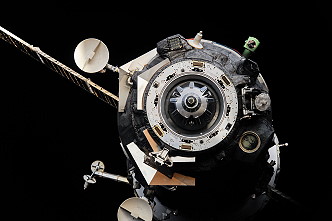 |
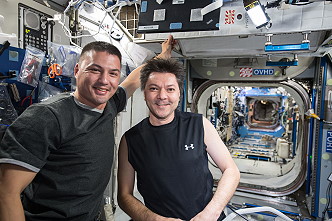 |
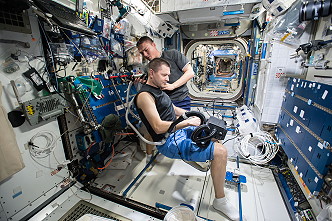 |
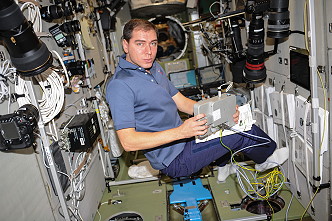 |
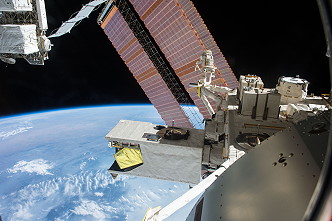 |
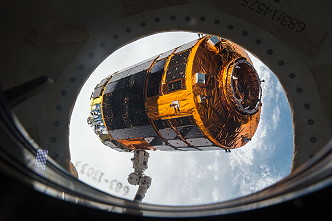 |
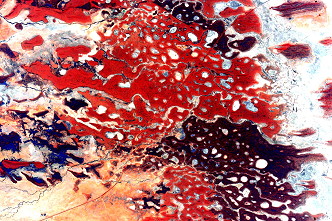 |
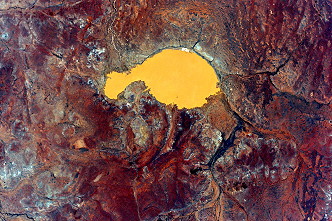 |
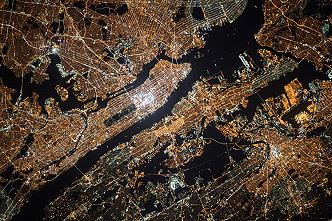 |
 |
 |
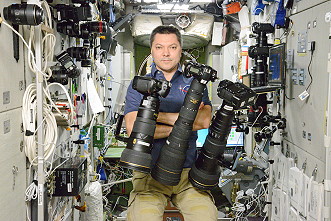 |
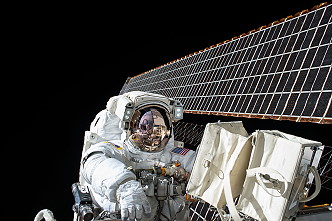 |
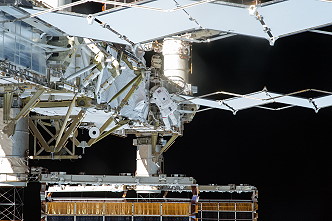 |
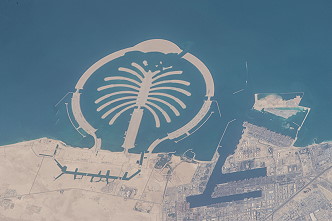 |
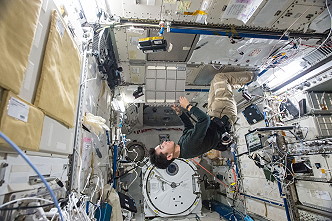 |
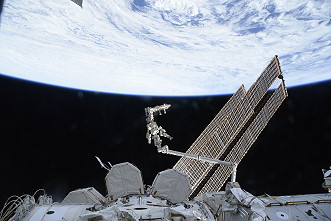 |
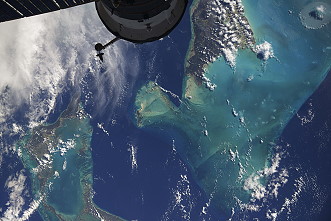 |
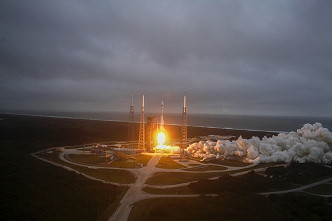 |
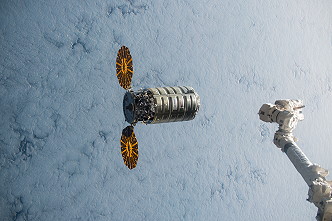 |
more EVA photos |
|
more Earth observation photos |
|
more onboard photos |
|
| © |  |
Last update on December 15, 2020.  |
 |